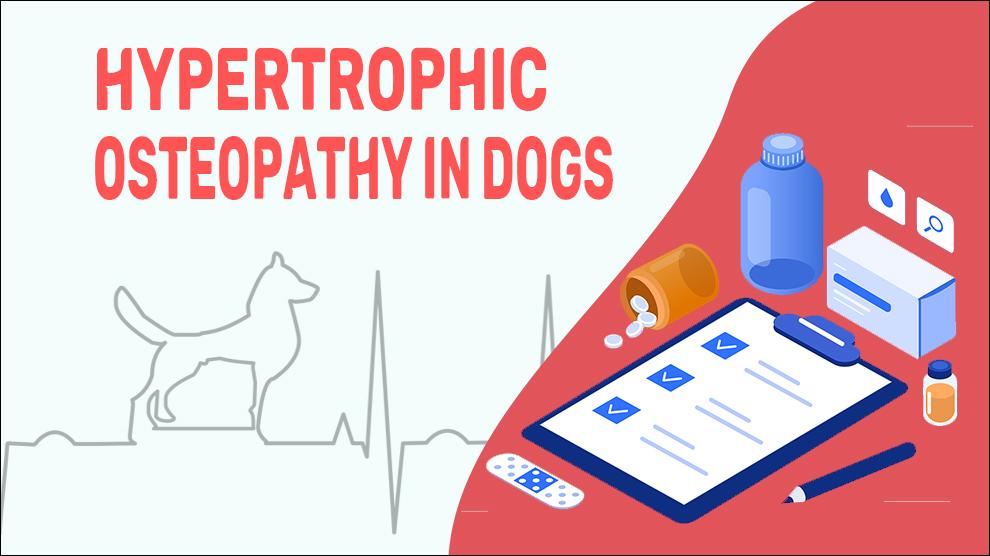What Is Hypertrophic Osteopathy In Dogs?
Hypertrophic osteopathy (HO) is an osteoproductive disorder of the subperiosteal bone and connective tissue along the metaphyses and diaphyses of appendicular bones. This disease is characterized by periosteal proliferation of long and short tubular bones of the extremities in response to neoplastic, non-neoplastic, and infectious conditions.
Also called Marie's disease, Neoplastic causes include tumors of various types located in the abdominal or thoracic (chest) cavity, primary lung tumors, and bone tumors that have metastasized to the lungs.
Non-neoplastic causes of hypertrophic osteopathy include intrathoracic foreign bodies, heartworms, pneumonia, inflammatory lung disease (such as blastomycosis), spirocercosis, and Dirofilaria immitis infestation.
The etiology and pathogenesis of hypertrophic osteopathy are still unknown; however, derived from an assessable increase in blood flow to extremities and consequential periosteal and connective tissue proliferation, it has been speculated that HO likely develops, in some way due to afferent neurologic stimulation.
Symptoms Of Hypertrophic Osteopathy In Dogs
- Painful swelling of long bones
- Thickening of limbs
- Pain with palpation and movement
- Mild or severe lameness (in one or more limbs)
- Blood in urine
- Lethargy and inappetence
- Fever and fatigue
- Diarrhea
- Pneumonia
Treatment Options For Hypertrophic Osteopathy In Dogs
- Vagotomy (surgical removal of vagus nerve located in the stomach) to lessen neurovascular reflexes which are connected with the bone changes
- Anti-inflammatories
- Nonsteroidal anti-inflammatory drugs (NSAIDs)
- Amantadine- brand names- Gocovri, Osmolex ER, Symmetrel and Endantadine
- For Canines with thoracic and lung tumors, chemotherapy and/or radiation therapy Radiation therapy is started in small frequencies over a period of time
- Sometimes, surgery will also be recommended
Home Remedies For Hypertrophic Osteopathy In Dogs
Hypertrophic osteopathy condition is not improved by conventional treatment. So apart from treatment, discuss with the veterinarian any home care specific to your dog’s situation.
How To Prevent Hypertrophic Osteopathy In Dogs?
Hypertrophic osteopathy pathogenesis is relatively unknown. Prevention is not possible for HO as the causes in dogs is varied. There’s not much a pet owner can do to prevent them as Hereditary is a factor in some breeds but a high-quality diet with bone supplements may help somehow or other. Strictly follow the veterinarian's recommendations of any therapeutic diet or nutritional supplements to manage the condition.
Affected Dog Breeds Of Hypertrophic Osteopathy
Boxer, Chesapeake Bay Retriever, German Shepherd, Great Dane, Irish Setter, Labrador Retriever, Saint Bernard, Weimaraner etc
Causes And Types For Hypertrophic Osteopathy In Dogs
1. Causes:
- Genetics
- Pulmonary masses of various origins
- Conditions in the thoracic (chest) or abdominal cavity
- Pulmonary tuberculosis
- Result of osteosarcoma amputation (removal of the bone tumor)
- Bone tumors that spread to the lungs
- Chronic infections (viral, bacterial, or parasitic)
2. Types:
- Pulmonary osteoarthropathy – Also called osteoarthropathy hypertrophicansor Bamberger–Marie syndrome, this is a paraneoplastic syndrome in which fibrovascular proliferation in the distal parts of extremities incorporates clubbing of the digits, arthralgias, joint effusion and periostitis of the long (tubular) bones.
- Thoracic hypertrophic osteopathy - Diffuse periosteal proliferative condition located in the thoracic or abdominal cavity due to a neoplastic cause.
- Infectious hypertrophic osteopathy – This type of osteopathy involves an infection of several types as the underlying cause.
3. Mortality:
There is no evidence of HO alone affecting the dog’s life span.
4. Diagnosis:
- X-rays/CT scan
- Blood tests to rule out infections
5. Prognosis:
The prognosis depends on the severity of periosteal proliferation of long bones. Non-malignant causes have a good prognosis. As the hypertrophic osteopathy symptoms can manifest earlier than the symptoms of the primary disease, earlier diagnosis of the condition can often increase the chances of a better outcome.
When To See A Vet For Hypertrophic Osteopathy In Dogs?
Contact your vet right away, if you notice any of the following:
- Painful swelling of long bones
- Thickening of limbs
Food Suggestions For Hypertrophic Osteopathy In Dogs
Foods to avoid:
- Commercial diet (canned food and/or kibble).
- Grains: soy, rice, wheat, etc.
- Avoid fatty proteins (opt for lean proteins).
- Table scraps, Treats, Sugars, Artificial Additives, and Added Salts.
Foods to feed:
- Bland diet: cooked rice, boiled chicken, low-fat cottage cheese, tofu, canned tuna, boiled hamburger, etc.
- Semi-moist pet food with boiled chicken or Meat-flavored baby food.
- Lean protein: Chicken, lean beef, turkey.
- Dark-green, leafy vegetables like spinach, broccoli, watercress, salad greens, parsley, etc.
- Fatty fish: tuna, salmon, sardines, mackerel, etc.
- Antioxidant-packed fruits: Blueberries, cherries, cantaloupe, peeled apple.
Conclusion
Generally, the diagnosis of Hypertrophic osteopathy could be confusing considering the multitude of diseases implicated in the condition. Treatment of HO is reliant on proper detection of the cause of the condition. So when you suspect something is not right, visit the vet for further clarifications.

















